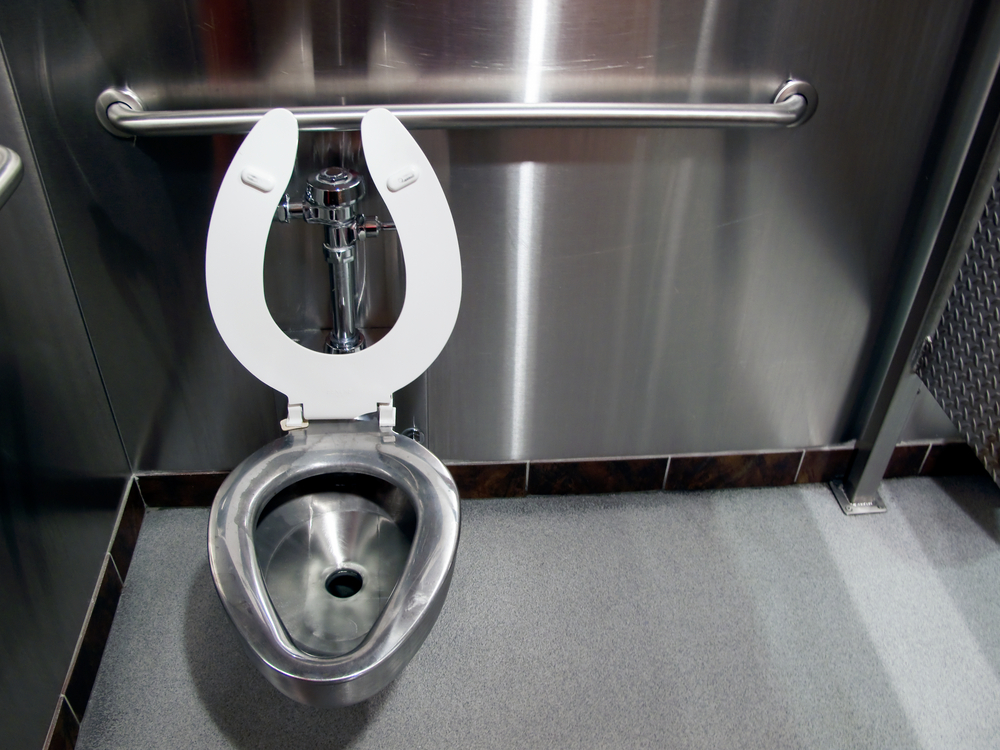Share This Article
The Case of Hammond v R
Mr. Hammond was charged and found guilty by a Local Court Magistrate for Damaging property under section 195(1) of the Crimes Act 1900 (NSW).
He appealed the Local Court’s decision to the District Court. The District Court dismissed his appeal which is when he then appealed to the Court of Criminal Appeal in the Supreme Court.
The Facts of What Happened
On 13 January 2012 at about 5:20am Mr. Hammond was arrested and taken to the Warren Police Station where he was kept in the police custody dock area, commonly used by police to detain people in police custody.
He was charged with common assault, and resist police officer in execution of duty offences.
At about 7 pm whilst in the police custody dock of Warren police station Mr. Hammond projected spittle or mucus from his mouth onto the metal stainless steal seat of the dock. The amount of the mucus was considerable which was depicted for the court to view in a photograph taken by police.
The Outcome
Mr. Hammond was successful in his appeal to the Supreme Court which quashed his conviction and found that there was no evidence to prove that there was any physical harm to or functional interference with the seat so as to render the seat as imperfect or inoperative.
The court made this conclusion for the following reasons:
- There was no evidence about the temporary physical damage to the seat.
- There was no evidence as to the effect of the spittle/mucus interacting with or adhering fast to the surface of the stainless steel. Acknowledging the nature of the material, being an anti-corrosive stainless-steel material.
- There was no evidence of any specific removal requirements.
- The physical effect of the spittle/mucus on the metal seat was similar to many fluids being capable of being wiped away with a damp cloth without leaving any mark.
- There was no evidence that the spittle or mucus required professional cleaning.
- There was no evidence that the portion of the seat covered by the spittle or mucus made the seat temporarily unusable or how often people were being charged at that time who would have required to use the seat.
- There was no evidence whether the seat would have been routinely cleaned in any event given that it’s a public seat with the anticipation of being used by people who are arrested, intoxicated, suffering influenza or wounds
The Law and Penalties for Intentionally or Recklessly Damage or Destroy Property Charges in NSW?
A person guilty of intentionally or recklessly destroying or damaging property in NSW will face a penalty of up to 5 years imprisonment.
Where a person does this in circumstances the damage or destruction is caused from a fire or explosive, the penalty is up to 10 years imprisonment.
Where a person commits this offence whilst in the company of another person(s), the maximum penalty is 6 years imprisonment. The maximum penalty is 11 years imprisonment if a person does this in company of another person where the damage or destruction is caused by means of a fire or explosive.
This is reflected in section 195 of the Crimes Act 1900 (NSW).
You will be guilty of damaging or destroying property under s195(1) of the Crimes Act 1900 (NSW) if:
- You destroy or damage someone else’s property; and
- You did this intentionally; or
- You did it recklessly, in the sense that you realised that the kind of damage caused may have been caused at the time of your actions.
Some defences to this charge include, where you acted under duress or necessity or self-defence to protect yourself or someone else. Other defences include where there was no damage caused, or any damage caused was not caused by your actions.
A more technical defence includes an argument that, at the time of your actions causing the damage you didn’t realise that it might cause the kind of damage that resulted.
What Does “Damage” Mean Under the Law?
Property can be considered as ‘damaged’ in either one or more of the following recognised ways under the law:
Temporary Functional Derangement: The Case of Samuels v Stubbs
In the case of Samuels v Stubbs (1972) 4 SASR 200, where a person was convicted for damaging a police officer’s hat after the offender had kicked it 3 times before jumping on it which caused what the court described as “temporary functional derangement” of the cap.
The court said that the cap was damaged because it was “injured or harmed in such a way to cause temporary derangement of its function and of the purpose which it was normally to serve.”
Physical Harm or Impairment to Value or Usefulness: The Case of Morphitis v Salmon
The case of Morphitis v Salmon (1990) Crim Law Reports 48 said that ‘Damage’ can here include not only permanent or temporary physical harm, but also permanent or temporary impairment of value or usefulness. For example, a person in a police cell who flushes the toilet in the cell after throwing a police supplied blanket in it will mean one cannot then use the blanket until it has been dried. It also means that the cell will be out of action due to flooding, until the water is cleared. Both blanket and the police cell will be considered to have therefore been ‘damaged’.
Damage can be either permanent or temporary. It isn’t necessary for the damage to be permanent or irreparable.
Imperfect or Inoperative: The Case of Zischke
The offender in the case of Zischke (1982) Qd. R. 240 painted political slogans on the surface of buildings, footpaths and walls in public places. He was convicted of damaging property on the basis that the painting on the properties rendered it “imperfect or inoperative”.
Damage can occur even if the ‘injury’ to the object or property isn’t permanent but able to be remedied or fixed, even if it’s by spending money to fix it.
In Zischke’s case the objects painted on were considered to have become ‘imperfect’ even though there was no requirement to spend money to remove the paintings. However, if expense to remove the paintings was required then that may be enough to establish the extent of the “imperfection” caused on the properties.
The court in Hardman & Ors v The Chief Constable of Avon and Somerset Constabulary (1986) Crim. L Rev. 330 held that there had been damage in the sense of ‘mischief to property’ which had caused expense and inconvenience to the local authority. After damage was caused to a pavement during a nuclear disarmament demonstration. An unstable whitewash was painted on the pavement which was expected to wash away with rain over time. The local authority decided to clean the pavement using high pressure water jets.
The case of “A” (a Juvenile) v The Queen [1978] Crim L Rev 689 says that a property is considered to have been ‘damaged’ if it can be described as either “imperfect” or “inoperative”.
For example, property will be considered ‘damaged’ due to being ‘imperfect’ if its physical appearance changed as a result of the act, despite reasonable attempts at cleaning it so that it may be described as “imperfect”.
Alternatively, property will be considered ‘damaged’ due to being ‘inoperative’ if as a result of the act the property was rendered “inoperative”, or unable to be used for its ordinary functions for a period whilst its imperfections were eliminated.
Alteration to Physical Integrity of the Property: High Court Case of Grajewski
The case of Grajewski v Director of Public Prosecutions (NSW) [2019] HCA 8 outlines that, to amount to “destroy or damage” there must be conduct which causes an alteration to the physical integrity of the property (whether relatively minor or temporary) which causes it to be permanently or temporarily inoperable.
This High Court decision clarifies that interference with the functionality of the property alone, without physical harm or derangement doesn’t amount to damage under section 195 Crimes Act. This means that the High Court has now rejected the approach that was taken in Hammond’s case (outlined above), which had said that interference with functionality without physical harm or derangement may amount to damage.
In Grajewski’s case, the Defendant Paul Olaf Grajewski in May 2016 was protesting.
He did this by attending the Carrington Coal Terminal.
He then approached a ship loader machine by climbing the stairs to the top of the ship and used a harness and roping device to lock himself to the ship loader. Due to safety concerns, the ship loader machine was shut down.
As a result, the machine was inoperable for about 2 hours while he remained in that position.
Mr. Grajewski was charged with damaging the machine under section 195(1)(a) Crimes Act 1900 (NSW). He was initially found guilty.
He appealed, and the High Court said that Mr. Grajewski’s actions, although caused the machine to be inoperative for about 2 hours, did not amount to damage to the machine due to there being an absence of him doing anything that actually caused about any alteration to the physical integrity of the machine. The decision to shut the machine down was due to safety concerns for Mr. Grajewski, and because of those concerns the machine remained shut down until he was removed.
As a result, Mr. Grajewski’s conviction and sentence for the damage charge was quashed by the High Court.









